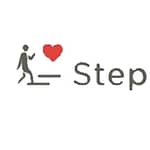How often do you have to deal with ineffective workflows, incomplete data on IT operations, and employee dissatisfaction and demotivation? We bet pretty frequently. Yet, there is good news for human resource professionals. Thanks to technological advances, they can significantly improve HR management.
That’s where workplace analytics comes into play. It’s an invaluable tool that, with the right approach, can bring the following benefits:
- optimise productivity;
- enhance employee engagement;
- reduce staff turnover, among others.
However, these are just a few reasons to invest in workplace analytics. It’s a comprehensive solution that can ensure data-informed decision-making at all levels of your organisation. From individual contributors to company-wide assessments, workplace analytics is there to help you.
In this ultimate guide, we’ll demonstrate that using workforce analytics tools is far from spying on employees and micromanaging teams. It’s about improving the overall company environment and driving the business forward in a meaningful way. Let’s start.
Understanding Workplace Analytics
Workplace analytics denotes the process of using technology to understand how your organisation performs, such as:
- how space is utilised;
- how employees attend the office;
- how they work remotely;
- how the office environment impacts their success.
While it’s frequently confused with HR and people analytics, workplace analytics goes beyond employee performance alone. It focuses on a broader workforce environment.
In contrast, HR analytics revolves around HR processes such as recruitment, compensation, benefits, and employee relations. It’s all about assisting people to seamlessly transform from job applicants into experienced professionals and independent employees.
People analytics answers the question of how each employee behaves, interacts with others, and whether they’re satisfied in their workplace. It’s usually what you gain from employee surveys, performance reviews, and digital communication tools. The goal is to enhance individual and team productivity and well-being.
Workplace analytics aims to equip you with the following knowledge:
- forecast future staffing needs based on business trends;
- identify inefficiencies and training opportunities;
- develop targeted retention programmes;
- reduce hiring costs, etc.
So, let’s focus on its benefits in more detail.
Key Benefits of Workplace Analytics Software
If you hesitate to introduce another management tool, this section is for you. If you don’t want to read all the benefits of workplace analytics software, here is a short answer: yes, workplace analytics is essential for modern business leaders. Its main strength lies in its ability to simplify work. To learn more, let’s zero in on what getting actionable insights into resource utilisation means for your business.
Boosting Productivity
Let’s be honest: Employee productivity is at the heart of all your management efforts. However, to improve productivity within an organisation, it’s not enough to stay behind every person and check how many lines of code they write daily or how many contacts they’ve added to their list.
It’s a multi-faceted process, often influenced by factors ranging from individual work habits to team dynamics. That’s where workplace analytics software can help. By uniting the information about your company from multiple data sources, it provides a clear picture of your employees’ work habits.
Enhancing Employee Engagement
The next set of valuable insights workplace analytics provides revolves around employee engagement. Whether employees are highly interested in your company and its objectives determines their satisfaction, contribution, and outcomes. That’s where you need to analyse key metrics, such as:
- employee activity levels (Low levels correspond with a problem that needs addressing);
- internal communication patterns (Check how team members communicate with each other to improve collaboration and prevent isolation).
Suppose you’ve found out that a marketing team faces obstacles when communicating, and the reason for that can be the office layout. By redesigning the office space, you can simplify the flow of information and collaboration across teams.
Reducing Employee Turnover and Burnout
Workplace analytics also helps predict when a person is about to burn out or leave the organisation. You should pay attention to certain patterns in employee behavior to mitigate risks and maintain a healthy workplace environment. After all, high employee turnover rates harm not only your bottom line and productivity but also the general mood in the company.
So, here are some vivid burnout indicators:
- overtime hours (An overworking person has an alarmingly high chance of burning out and getting disgruntled with their job);
- rest breaks (How long and how frequent are rest breaks?)
If you see something disturbing in the analytics, optimise your wellness programme. For example, you can introduce flexible scheduling and mandatory break policies.
OptimiSing Technology Use
Workplace utilisation also includes the use of technology, whether software or hardware. That’s where software and hardware usage data helps. Just think: according to G2, 38% of software licenses remain unused or rarely used (less than once a month). By knowing which tools are overused or underutilised, you can better manage software licenses and reduce the costs of paying for unneeded solutions.
The same rule applies to hardware usage patterns. Access workplace analytics to see what devices employees will benefit from, ensuring office resources are used efficiently without unnecessary expenditure.
How a Workplace Analytics Solution Works
When you opt for workplace tools, you need to understand what to expect from them. The process of analysing workplace data on office usage, foot traffic, and meeting room bookings is broken down into several steps, such as:
Data Collection
The workplace analytics solution gathers information from various sources. It’s comprised of employee performance, space utilisation, and efficiency measures.
At this stage, you need the right analytics tools like performance management software, sensors, IoT devices, time-tracking software, and project management applications.
All of these are responsible for various parts of the working procedures, from monitoring task completion rates to data on meeting room occupancy rates. For example, a technology firm may use RFID badges to gauge foot traffic, identify peak hours, and adjust staffing and resources accordingly.
Data Analysis
Once the data is there, it’s time to examine it more closely to derive valuable insights:
- Predictive analytics: Based on historical data, predictive modeling helps forecast what may happen in the future, such as how long the task will take and how many employees can leave the company in five years.
- Prescriptive analytics: This type of advanced analytics provides recommendations based on the data, going one step beyond forecasts. For instance, you can use prescriptive analytics to find out what you exactly need to do in the following cases:
- to improve performance;
- to optimise your space utilisation;
- to identify where you need to step in and offer resources or training to avoid burnout.
- Machine learning algorithms: ML is all about learning with time. When you employ ML, the system not only performs some tasks better than humans and doesn’t make mistakes due to fatigue, but it can also identify patterns that may not be evident to human analysts. As more real-time data is accumulated, the ML-powered workplace analytics tool makes more precise decisions about space utilisation, employee preferences, and room usage.
Reporting and Metrics
The final step in the workplace analytics process is drafting detailed reports. Reporting involves transforming analysed data into understandable and actionable insights, allowing team leaders to implement change.
It’s one of an analytics solution’s most crucial features. However, note that the quality of reports heavily depends on whether you’ve gathered accurate data.
Send out pertinent reports automatically on a regular basis. To do that without much human involvement, schedule the reports for various departments, locations, and projects. Workplace analytics software typically incorporates tables and visual charts to show the metrics you choose in an easy-to-read manner, for example:
- desk usage (by floor/neighborhood, etc.);
- packages, recipients, and the speed of deliveries;
- meeting room booking by days of the week and the popularity of each amenity;
- information about visitors (e.g., the part of the day they come most often, how much space they require, and how many people attend your office).
Advanced Applications of Workplace Analytics
Workplace analytics serves to monitor employee attendance, activity, and space usage. Yet, it’s more than that. In this section, we’ll cast light on less obvious applications of this tool in the modern workplace.
Video Surveillance Dashboards
Security sparks considerable apprehension in today’s world. The integration of video surveillance dashboards into workplace analytics represents a significant advancement in organisational security and operational monitoring.
First, it reveals who visits your premises, distinguishing between authorised and unauthorised entries. If you’ve spotted unwanted visits and any patterns, you can alter security staffing or visitor management protocols in particular cases.
2023 Market.us Scoop statistics say that 40% of businesses have implemented protection measures like security cameras and surveillance systems to safeguard their physical integrity.
Crowd Management
Effective crowd management is crucial for safety and productivity, especially in spaces like cafeterias and during peak hours. For example, when everyone in the neighborhood has a lunch break at the same time, they flock to your diner. Workplace analytics can help manage this by:
- analysing occupancy data (an owner may talk to different firms to create a break plan categorised into groups of time slots to avoid overcrowding);
- setting up threshold alerts (you get a notification when the number of people in a given area exceeds safety thresholds, thus taking action to prevent overcrowding and ensure compliance with health and safety regulations).
Strategic Decisions on Space Utilisation
Workplace analytics demonstrates how space is used in an organisation for you to optimise your space management, leading to more cost-effective resource utilisation. For instance, you may gain insights into desk usage and which meeting rooms are most frequently booked, making data-driven business decisions.
Workplace analytics also supplies you with heat maps of using the office resources. Heat maps can show where employees spend most of their time, helping to identify high-traffic office space. Maybe these places will benefit from layout changes to enhance accessibility or reduce congestion. Why not?
Challenges and Considerations
There can be various reasons for rolling out workplace analytics. Cost savings, informed decisions, and space optimisation are just a few of them. Yet, you need to consider the following roadblocks that may arise during this process, namely:
Data Privacy Concerns
Customers, employees, and visitors may be hesitant to disclose data on their activity, be it employee attendance or onsite collaboration casual hangouts. The solution:
- Adhere to stringent data protection regulations like the General Data Protection Regulation (GDPR).
- Be transparent about data usage.
- Avoid excessive monitoring.
Accuracy
Making the right strategic decisions is possible only with accurate data. To ensure its high quality, conduct audits regularly, establish protocols to check and clean data, and verify information using multiple sources. For example, if you leverage Salesforce to store critical details, run a comprehensive Salesforce audit to ensure that all entries are up-to-date and consistent.
Human Insight
Automation can be successful in data analysis but must be balanced with human judgment. Algorithms can uncover patterns and make forecasts, but sometimes, especially if not enhanced with artificial intelligence, they lack the human context required for complex decision-making. Incorporate people during the analysis to make data-driven and contextually informed decisions.
Employee Acceptance
Some people may impede the integration of workplace analytics software. To address their doubts, explain why it’s needed, train employees to enhance their data literacy, and hire data analysts or specialists to bridge the skill gap.
Conclusion
Do you want to pinpoint employee preferences and make data-driven decisions? Workplace analytics is your trustworthy ally. Take advantage of the information on your office space usage, optimise conference rooms, and eliminate employee conflicts over using meeting rooms. Enhance decision-making, create customised reports, and switch to a data-driven approach without shooting in the dark.
Author: Alex Husar – Chief Technology Officer, Onilab
Photo credit: StockCake




